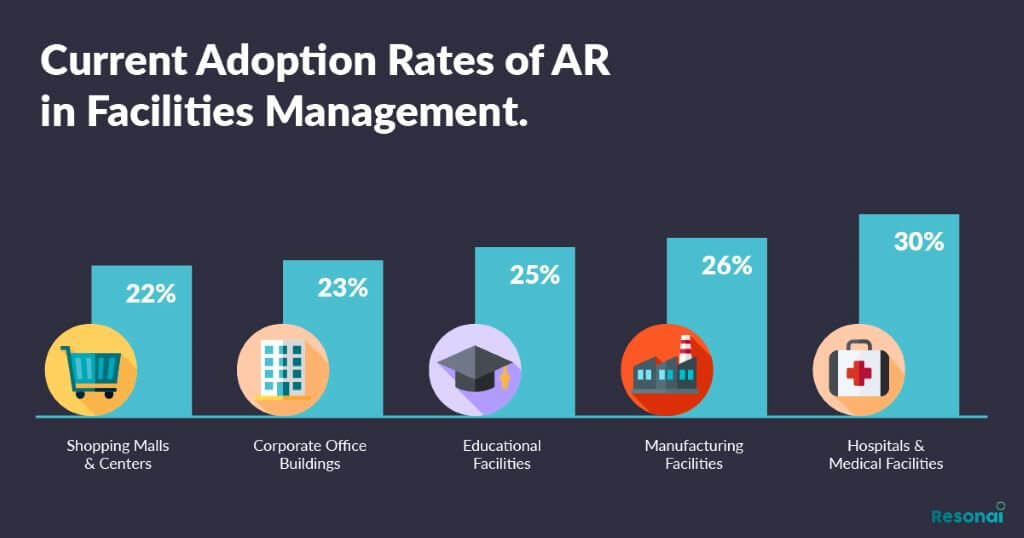Augmented reality is bringing positive change beyond the world of gaming and entertainment. From hospitals and medical facilities to corporate facilities, it is being used in a myriad of ways to simplify tasks and improve efficiency.
Resonai, an XR and AI company, recently released its The State of Augmented Reality in Facilities Management: 2021 report. It delves into the current and expected applications of AR in retail, healthcare, corporate, and other building properties.

Here, we’ll share some of the insights from the report.
How Is Augmented Reality Being Used in Facilities Management?
 Resonai surveyed senior facility management directors, as well as executives, in Europe and the United States, from November 2020 to January 2021. Their respondents reflected a cross-section of building types, ranging from manufacturing, retail, residential, medical facilities, and more.
Resonai surveyed senior facility management directors, as well as executives, in Europe and the United States, from November 2020 to January 2021. Their respondents reflected a cross-section of building types, ranging from manufacturing, retail, residential, medical facilities, and more.
According to the report, hospitals and medical facilities have been using AR applications more than other properties. They had a 30% adoption rate. Manufacturing facilities came a close second with 26%. Educational facilities were next at 25%, corporate offices at 23%, and shopping malls and centers at 22%.
Although AR has varied applications in these fields, the most common was for tours and demonstrations. It was also used for industrial manufacturing, maintenance and repairs, tenant and visitor services, as well as training.

AR can also play an important role in smart buildings. Properties are implementing more IoT-enabled devices, such as environmental sensors, HVAC systems, and security systems. This, unfortunately, can complicate management in the building. However, AR can simplify all of that for facilities managers. Using AR-enabled programs, managers can oversee entire building systems with ease.
What Are the Advantages of Augmented Reality?
AR offers a wide array of advantages. According to facilities managers, the benefits of AR adoption include the automation of maintenance processes (49%) and prevention of maintenance problems (45%). Amid the COVID-19 pandemic, AR has been beneficial as well by reducing physical contact between workers.
Around 30% of facilities managers claim that the greatest advantage of AR is its ability to create new revenue opportunities for the company.

Over the years, augmented reality applications have become more varied and accessible. They are opening up new experiences by improving everything from marketing to maintenance and indoor navigation.
Currently, only one out of five facilities management professionals are using AR applications for at least one function. But in the next 24 months, that will change because three out of four professionals surveyed planned to implement AR in their respective fields.
Cost is the most common barrier to AR adoption. However, even that is changing too. Now, managers are more aware of the advantages of AR, as well as their revenue opportunities. It is encouraging them to embrace change and invest in new technologies that can significantly improve operations and profits.




